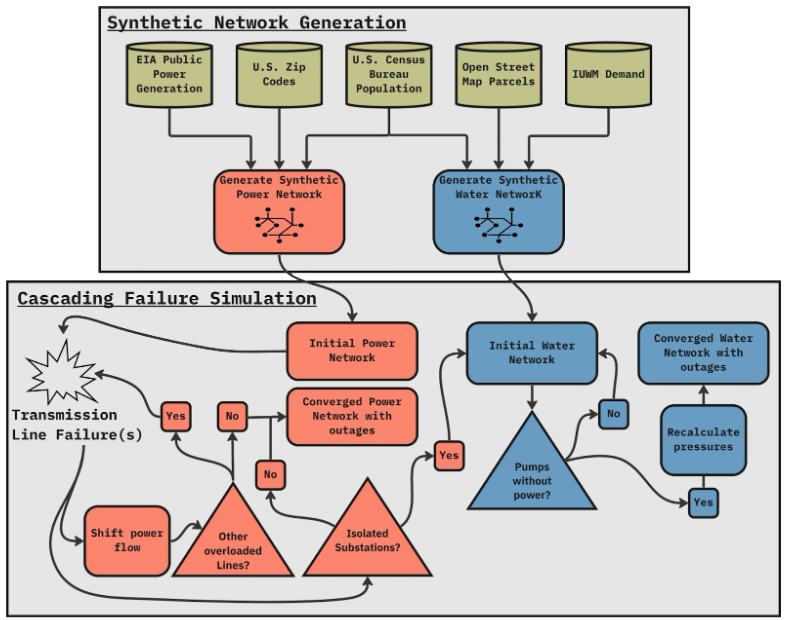Ryan Hoff, Mikhail Chester, Environmental Research Infrastructure and Sustainability, 2023, 3(2), 025009, doi: 10.1088/2634-4505/acd07d.

Toolkit Overview

The toolkit was developed to support resilience practitioners and researchers to efficiently invest in protecting their systems against emerging and uncertain hazards. The toolkit has many capabilities including:
- 1) A synthetic infrastucture model to estimate the layout and characteristics of assets and the network;
- 2) An interdependency model for joining infrastructure system physical connections;
- 3) a cascading failure model for estimating how failures progress within and across infrastructure systems;
- 4) an impact assessment model for capturing the outcomes of failures on people and other infrastructures.
Together, the toolkit supports the design of resilience strategies with sensitivity to limited resources.
Contact
Contact Prof. Chester to use the model, or for additional information.
Documentation including publications are provided below.
Mikhail Chester
mchester@asu.edu
Capabilities & Methods
The core objective of the toolkit is to describe how failures progress within and across infrastructure systems. A mixed methods approach is used depending on the quality and availability of requisite data. The toolkit starts with a power transmission network, other infrastructure networks (e.g., water distribution, stormwater) and a hazard model that describes how the power network will experience disruption. A probabilistic cascading failure model is run that explores the likelihood of the offlining of transmission lines, and a power system solver is used to balance flows, ultimately describing offlined substations. Millions of iterations are explored to stochastically describe failure likelihoods, and with each iteration the impacts of power outages are captured in other infrastructure. For example, a water distribution model including hydraulic solver is used to describe pump outages and resulting insufficient pressure at buildings. A consequence analysis model is used to capture the effects of power outages on other systems, which can include socio-economic analysis, or transportation signaling outages.

Infrastructure Modeling
The toolkit is flexible in that it can use real infrastructure data, or when limited to no data are available synthetic models can be employed. Power transmission and water distribution are critical infrastructure that can be synthesized for assessment.

Power Transmission
Using population data, demand estimates, and supplemented with publicly available data on local utilities, the toolkit generates a power transmission network including the substations and their service areas, transmission line connections, and transmission line characteristics. The synthetic module produces the necessary information to model the power system in state-of-the-art solvers including OpenDSS and PyPSA.

Water Distribution
Using information on treatment plants, elevation, roadway networks, buildings, and demand, the toolkit generates a water distribution network including pipe location, pipe diameter, pipe initial year of construction, pump location and pump size characteristics. The synthetic module produces the necessary information to model the water system in state-of-the-art solvers including EPANET.

Interdependencies
The toolkit connects the water and power distribution models to establish interdependencies between the systems, identifying water system assets and their associations with substations.










